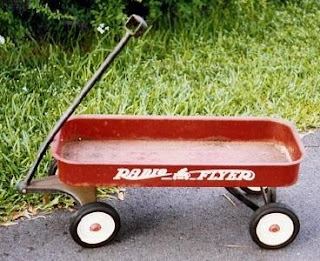Richard Thompson James was born in 1918 and graduated from the Pennsylvania State University in 1939 with a degree in mechanical engineering. Doing his bit for the war effort in 1943, James worked on a method for suspending sensitive instruments on board navy ships, using springs. One day, he accidentally dropped one and needed to chase it as it sprung its way across the floor on its own. The rest is toy industry history.
James invested in a coil-winding machine while his wife Betty came up with the name Slinky. They cranked out 400 pieces. Each was 98 coils of high-grade blue-black Swedish steel, two and a half inches tall in its relaxed state. Although they convinced Gimbels Department store to carry the one-dollar toy for Christmas 1945, the static Slinky impressed no one.
At first.
 Once James demonstrated the toy in action, however, their entire production run sold in 90 minutes. Since then, 300 million Slinkys have sold world-wide.
Once James demonstrated the toy in action, however, their entire production run sold in 90 minutes. Since then, 300 million Slinkys have sold world-wide. Slinkys also prove popular with high school science teachers and college professors because they perfectly demonstrate the properties of waves. Astronauts on the space shuttle have even used them in zero-gravity experiments.
Like every other successful product, the philosophy seems to be if one toy is good, more is better. Slinky Dog debuted in 1952 and was quickly followed by other pull-toy characters like Slinky train Loco, Slinky worm Suzie, and Slinky Crazy Eyes. Along with Mr. Potato Head, Slinky Dog made it into the Toy Story movies beginning in 1995. Betty James agreed that Pixar’s movie version of Slinky Dog was much cuter than what they’d manufactured.
What makes a Slinky so fun to play with? Sure, you can explain how it performs tricks, flipping down stairs end-over-end as it stretches and re-forms itself with the aid of gravity. How, when dropped, a Slinky appears to levitate for a split second. How it will even walk itself across a flat surface once you get it going just right. But something about its wondrous simplicity appeals to kids and adults alike, doesn’t it? At Betty James’ insistence, Slinky has maintained its affordability. The price and size make it a perfect item to include in a Christmas shoe box or stocking.
Sadly, Richard and Betty James divorced in 1960. She took over the company. Richard joined Wycliffe Bible Translators in Bolivia, where he died at the age of 56 from a heart attack. The incredible toy he developed (it was really more of a discovery than an invention) has entertained generations. I heartily recommend the adorable “Trained Slinky Circus” bit on You Tube by Jack Kalvan if you need a laugh. HERE's the link.
The Slinky song holds the title of longest-running jingle in television advertising history. If it isn’t going through your head by now, I can help with that. “A spring, a spring, a marvelous thing! Everyone knows it’s Slinky.”
May this column “spring” you into 2022 with joyful anticipation and hope. I know it’s been a difficult year. I also know God is still on his throne, he loves you, and nothing has caught him off guard. He’s got this. He’s got you. Happy New Year!



